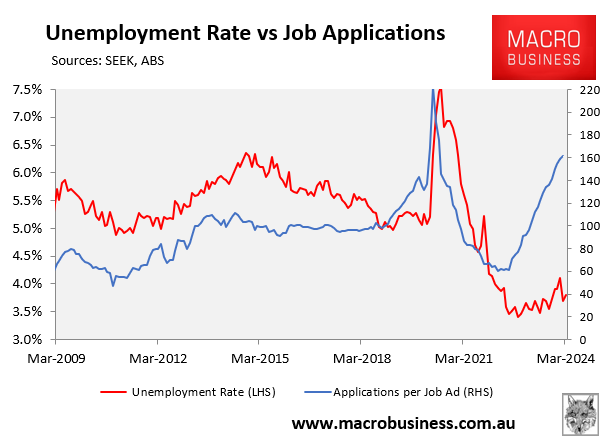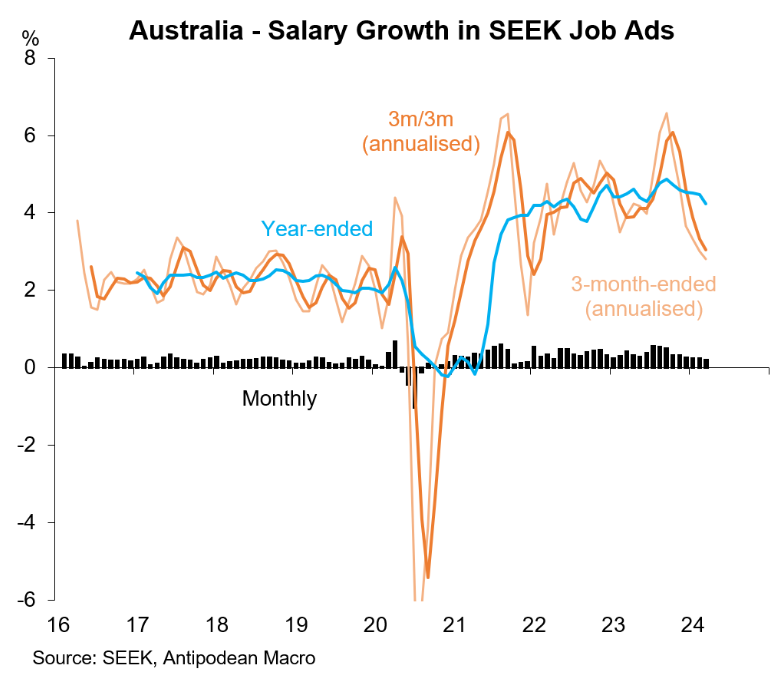With adjustments for seasonality, the number of job ads in March 2024 rose by 0.2%, or 400, to 249,000. With almost half as many ads in the job market as there were on average for the month of March 2019, the number of available positions remains high.

The point I wish to make is that on each of the last three occasions that job ads were at the current level (2007. 2009, and 2021), the unemployment rate was at 5%.
And that doesn’t even account for population growth. For instance, in 2008, the labour force was 3m workers smaller, so the same number of job ads should equate to much higher, not lower, unemployment.
Two issues with ABS unemployment help explain the shift:
- The gig economy was largely introduced post-GFC. Uber’s arrival, especially in 2012, has made underemployment a bigger issue than unemployment, which measures a meagre number of hours worked.
- The ABS is struggling to adapt to superfast immigration. When 100,000 workers arrive every month, the ABS cannot capture the expansion of the available labour pool. Every 100,000 workers is worth 0.7 in unemployment if they are idle.
The private surveys still strongly suggest a material rise in unemployment is already well underway with skyrocketing job applications:

And rapidly deflating wages, already returned to the lowflation period:

The NAB survey is further corroborated of both:

As the FT wrote recently:
“Employment figures are being closely watched by central bankers around the world as they try to work out when to cut interest rates this year. There is just one problem: the data might be dodgy”, the article reads.
“Swings in immigration, rapid changes to working conditions in the wake of the pandemic and lower participation in polls are combining to create a big problem for labour market statisticians”.
“Economists are increasingly questioning whether official reports can be relied upon for an accurate read of the labour market”…
“Economists and policymakers in the UK and US are doing their best to patch together a coherent view of their labour markets by looking at a broader range of surveys and alternative data”
What is the ABS doing to clear up its dodgy labour market data?

